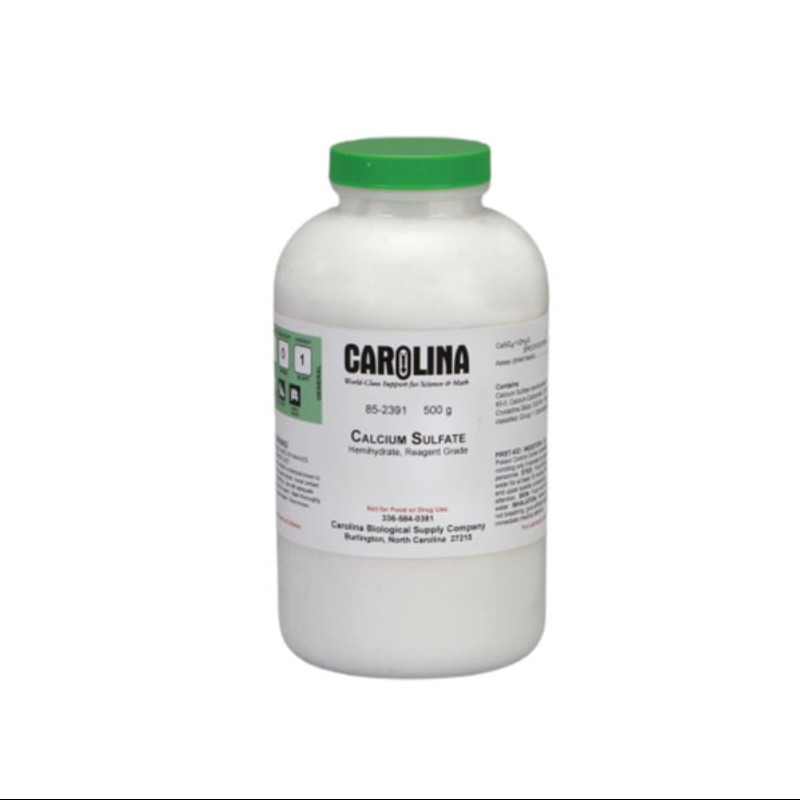Calcium sulfate hemihydrate
প্লাস্টার অফ প্যারিস হ'ল ক্যালসিয়াম সালফেট হিমিহাইড্রেটের বাণিজ্যিক নাম দ্রুত এটি জল মিশ্রিত করা হয় যা শীঘ্রই শক্ত হয়ে যায়। কাস্ট, ছাঁচ এবং ভাস্কর্য তৈরিতে ব্যবহৃত হয়।
Calcium sulfate hemihydrate exists in two forms designated the α and β forms of the material. The most common form is the β form, which is used in most commercial grade materials. It uses large amounts of water (approximately 0.6 g/g of hemihydrate) in setting and sets to form a less dense material than the α form, which is used as a dental material referred to as dental stone. The α form material uses less water (approximately 0.3 g/g of hemihydrate) and sets to form an extremely dense dihydrate. This material is processed differently from the parameters listed above.
The α form material is also produced by heating gypsum, but this material is heated to 123 °C under approximately 1.2 kg/cm2 (17 psi) of pressure, in steam for 5 to 7 hours in an autoclave. Processing gypsum in this way produces more dense crystals with little porosity, and these crystals require less water for setting and produce the dense dihydrate. The α form material, because of its density, dissolves slower than the β form material. Thus the α form hemihydrate has been the material of choice for bone-filling applications because of its stability, although no conclusive studies have compared the two forms.
The differences between them may explain some of the variability seen in results of bone repair studies. In past studies, both forms of material, and many variations on each form, have been used. This has led to widely variable results. Scanning electron microscopy of the α form hemihydrate material shows the distinctive particle shape and density of this material, as well as the particle size range of the material (Fig. 14.1a). This α hemihydrate is a highly pure, chromatography grade material.

Login To Comment